It’s been raining steadily for the last few days and most trees have lost their leaves. But not all. The linden tree at the end of the lawn was radiant one day last week, just before the rain began to fall.
Colour remains, but you have to look more closely to find it. The hydrangea bushes by the front door don’t shout like the linden tree; instead they glow, softly pink.
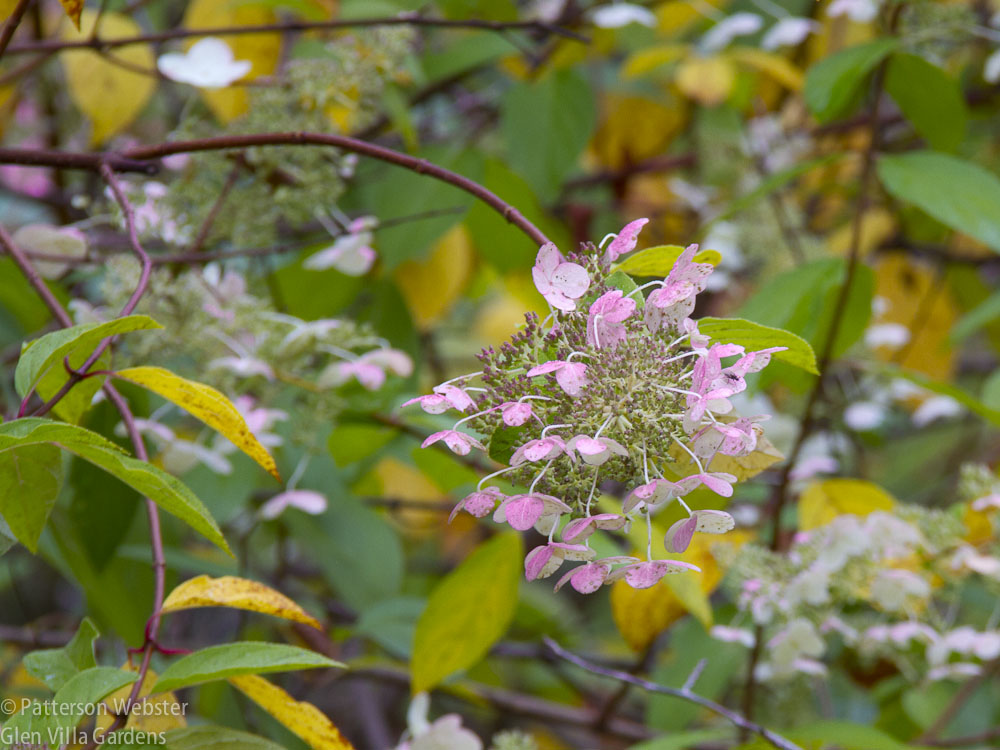
The pink tones of a hydrangea blossom are in sharp contrast with its yellow and green leaves. This is not a colour combination I would normally favour, but here it looks just right.
Carpeting the ground at the feet of the hydrangea are the brilliant red leaves of Persicaria bistorta ‘Superba.’
More subtle are the colours of the Siberian cypress (Microbiota decussata), a wonderful evergreen that grows well in filtered shade.
The older leathery leaves of Bergenia cordifolia are an intense red, in sharp contrast to newer green leaves and to the Italian parsley running wild in the planter box beside it.
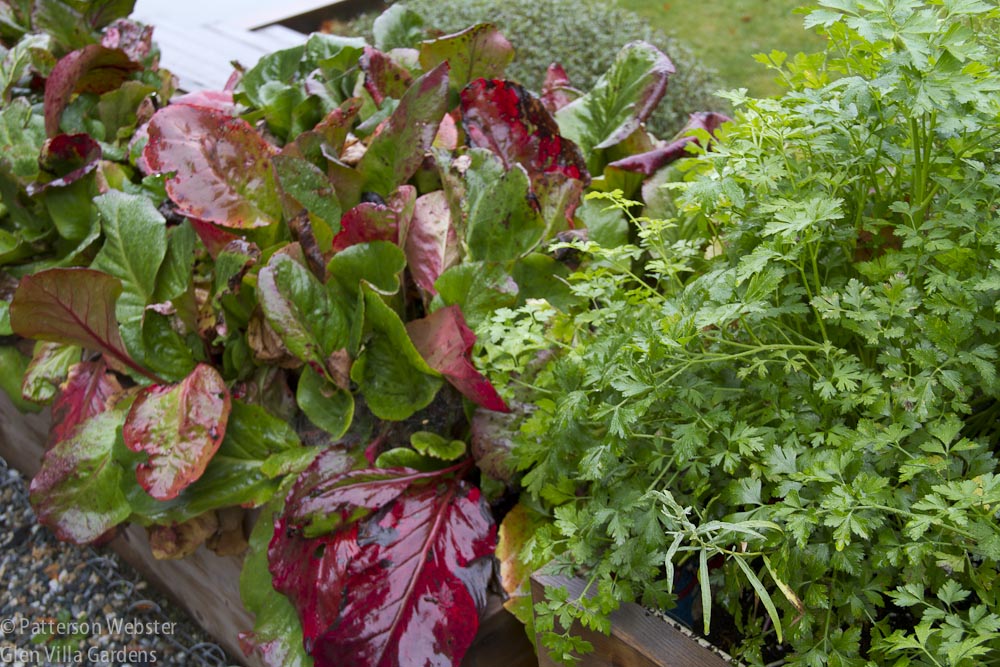
Some people call this plant pigsqueak , others called it elephant’s ear. I prefer its proper name, Bergenia.
Ornamental grasses come into their own in autumn. I’ve used three of them around The Aqueduct. Most colourful now is the switchgrass ( Panicum virgatum ‘Shenandoah.’)
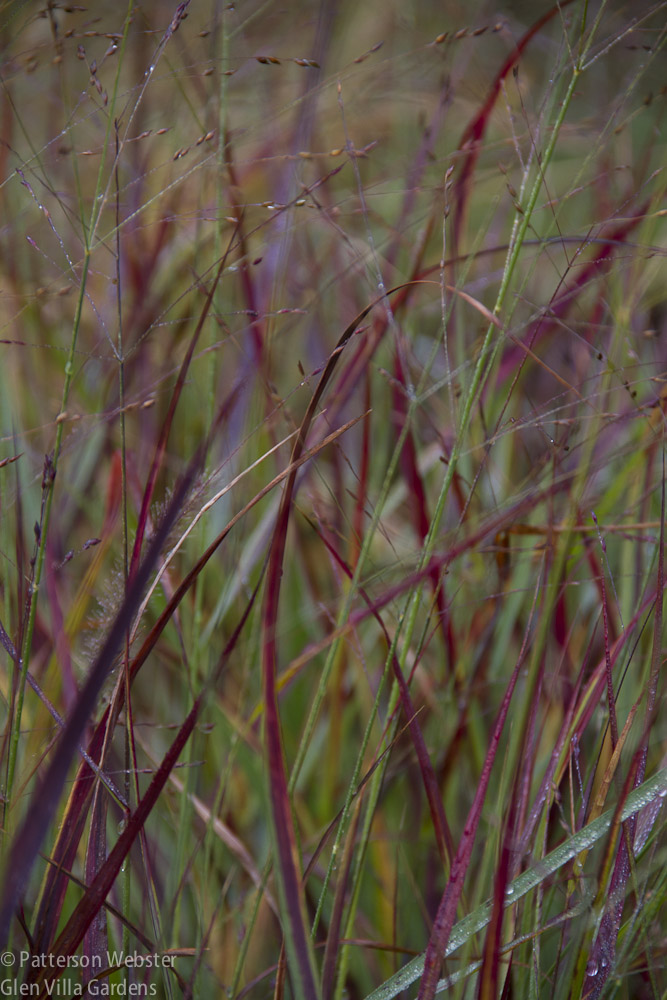
I chose this variety of Panicum because its varietal name reminded me of Virginia’s Shenandoah valley, where my grandparents had a farm.
The plumes of Korean feather reed grass (Calamagrostis brachytricha) are fading from silvery-pink to creamy white. This stately grass isn’t as strongly upright as Calamagrostis ‘Karl Foerster’ but I like its relaxed look.
Prairie dropseed (Sporabolus heterolopsis) grows slowly here in Quebec, but I’m prepared to give it time in order to see here what I saw at Le jardin plume in Normandy: a mass of golden-orange hues that shone so brightly in the sunshine that I couldn’t believe what I was seeing. The colour on the plants at Glen Villa are beginning to show, toning in beautifully with the rusty steel plate that provides a backdrop.
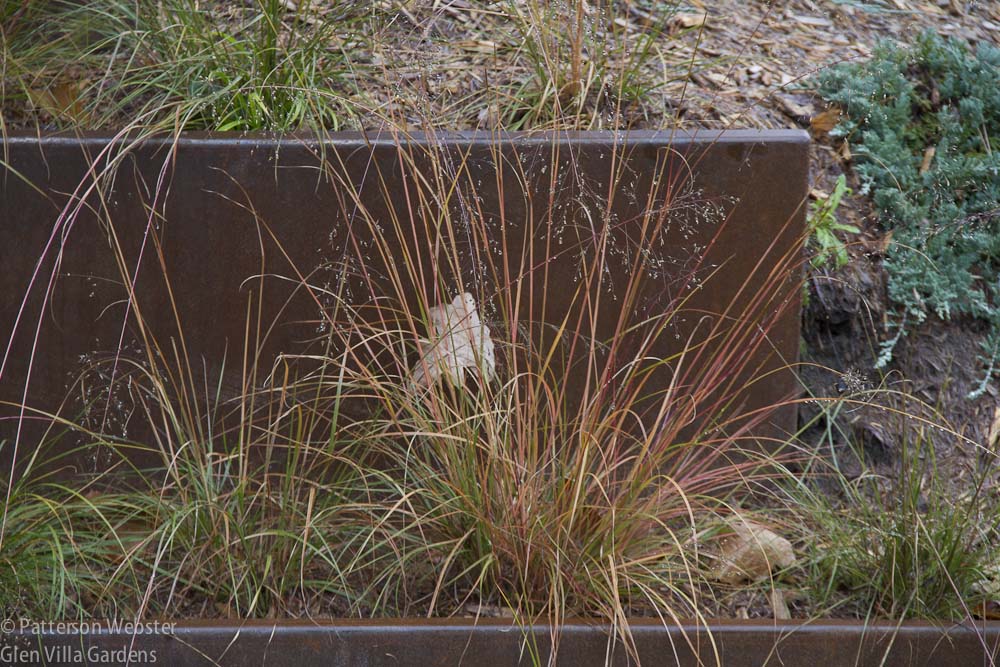
Rusted steel combines with gold: if it looks this good now, it will be amazing when the grass has grown to full size.
Along with the ornamental grasses, sedum planted atop the gabion wall adds colour to The Aqueduct. I used three types, S. rupestre ‘Angelina,’ S. reflexum ‘Blue Spruce,’ and S. spurium ‘Red Carpet.’ The contrast between them provides colour from spring to fall.
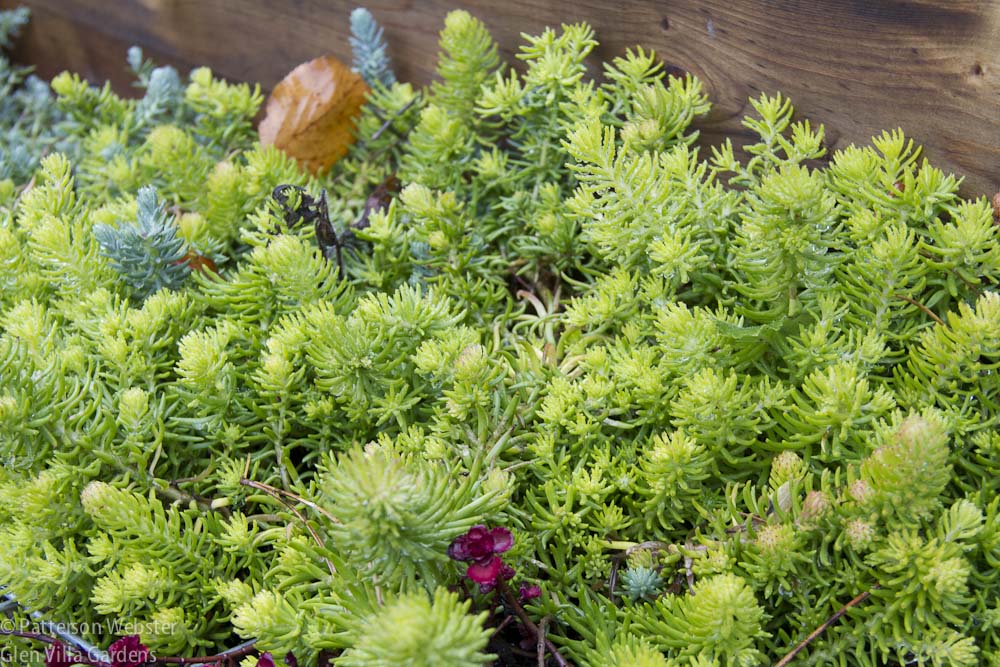
Here you can see just a touch of S. ‘Blue Spruce’ and a hint of S. ‘Red Carpet,’ dominated by S. Angelina.’ ‘Angelina’ sometimes develops amber tones in autumn. Mine is still bright green.
Near the front door the tiny ribbon-like flowers of American witch hazel (Hamamelis virginiana) form a yellowy haze.
Gorgeous colour abounds. Thankfully. Because what comes next is snow, a very cold blanket of white.


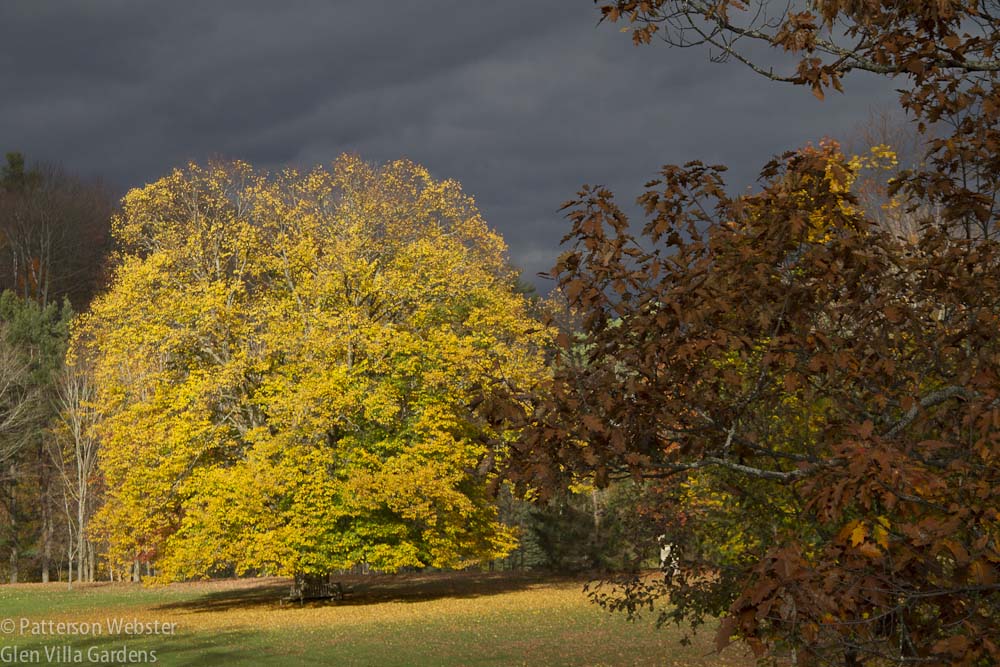
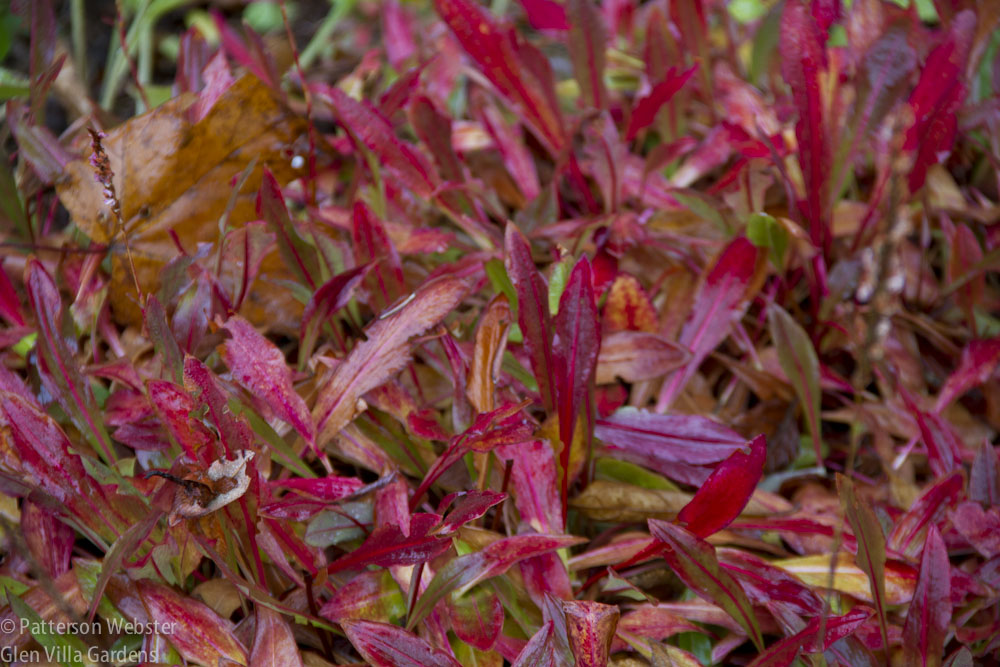
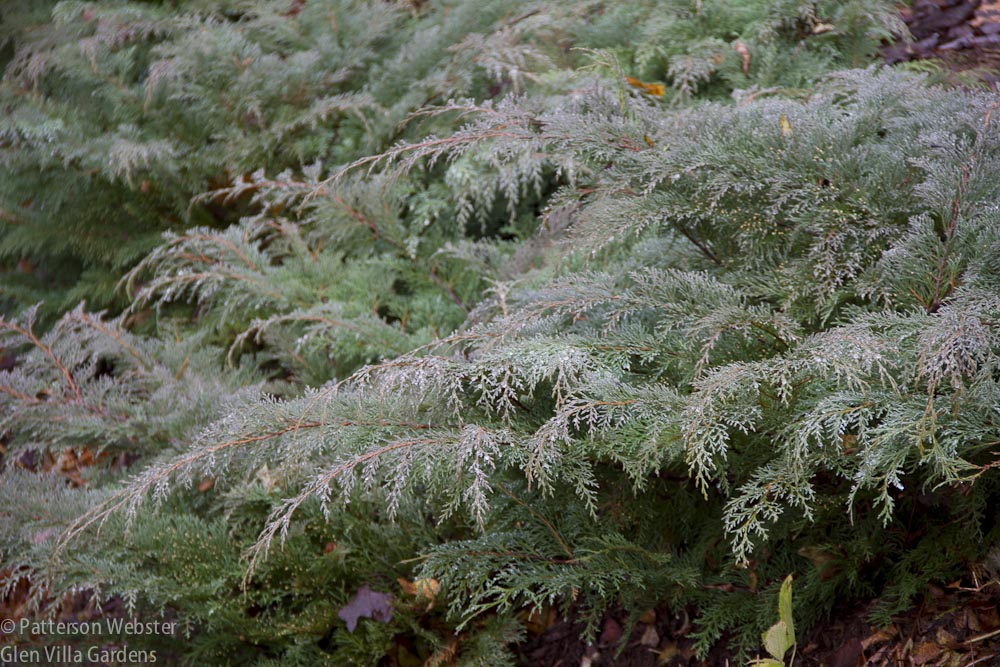
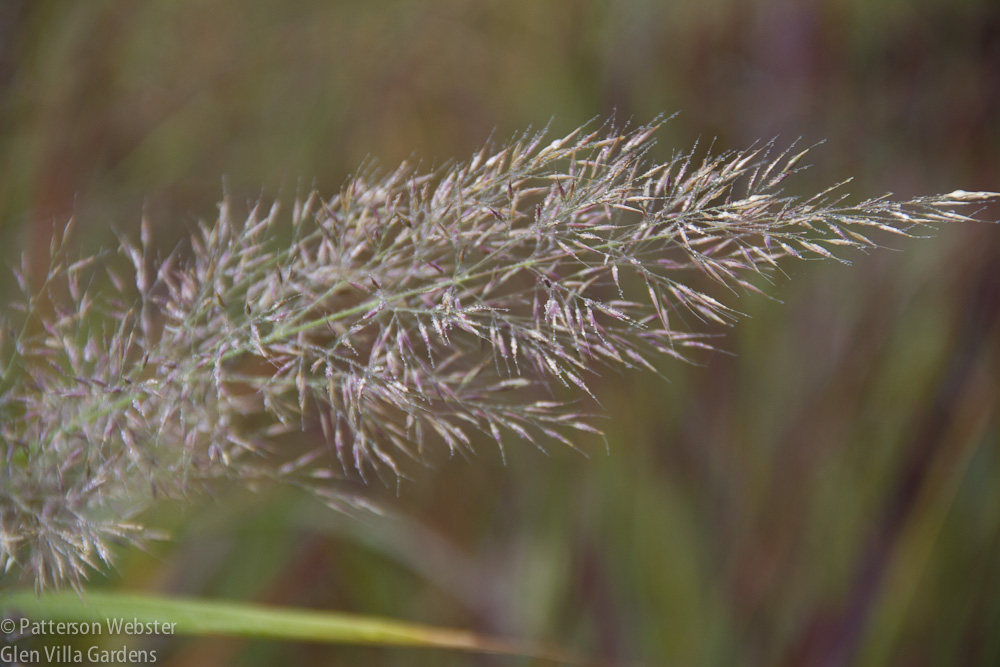
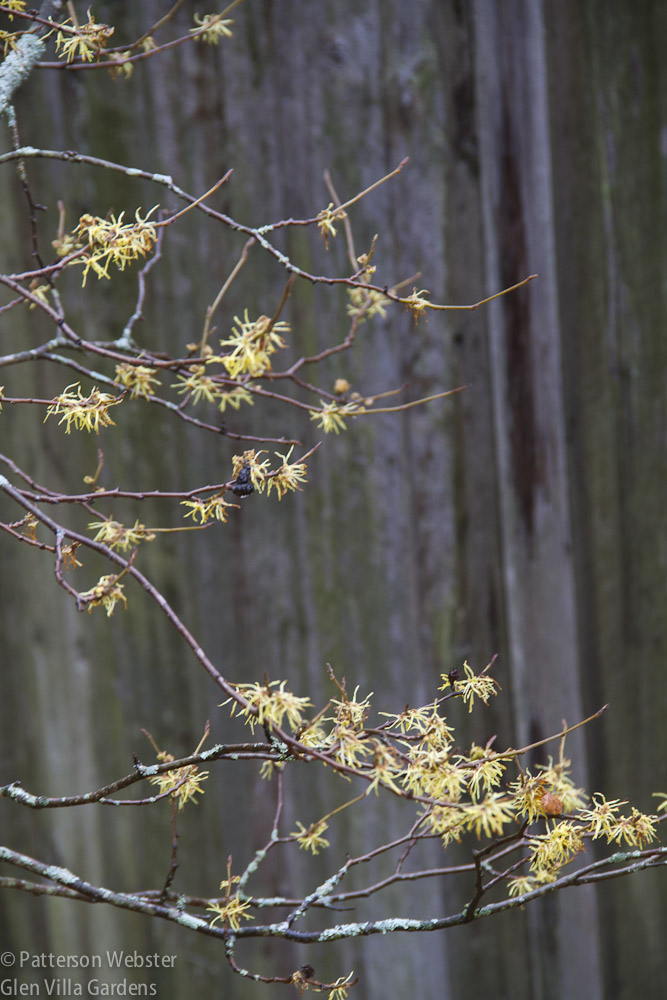



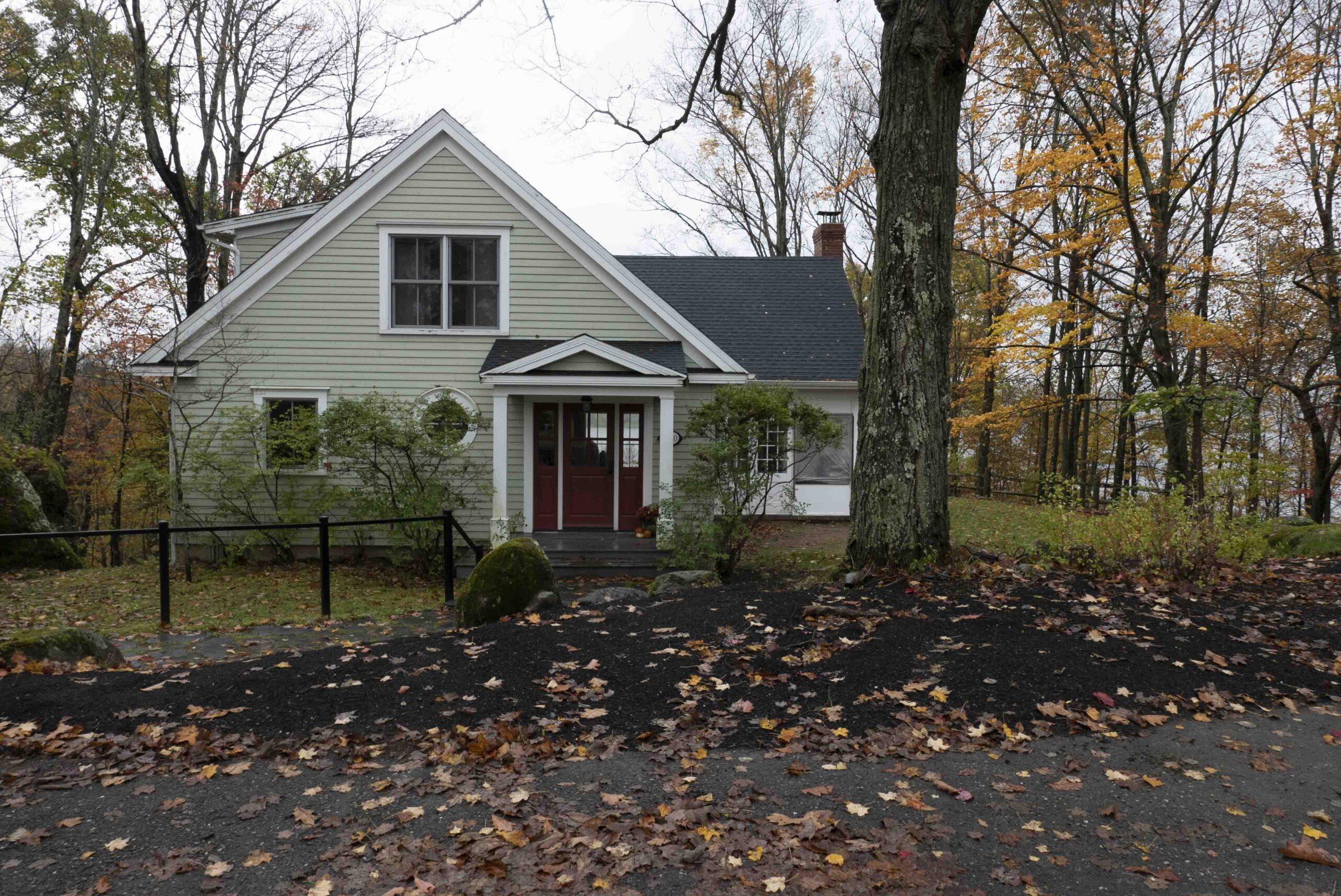
So many beautiful colours! I love the photo of the linden.
The linden is close to perfection in tree-ness.
I love the ornamental grasses.
So do I, Jean.